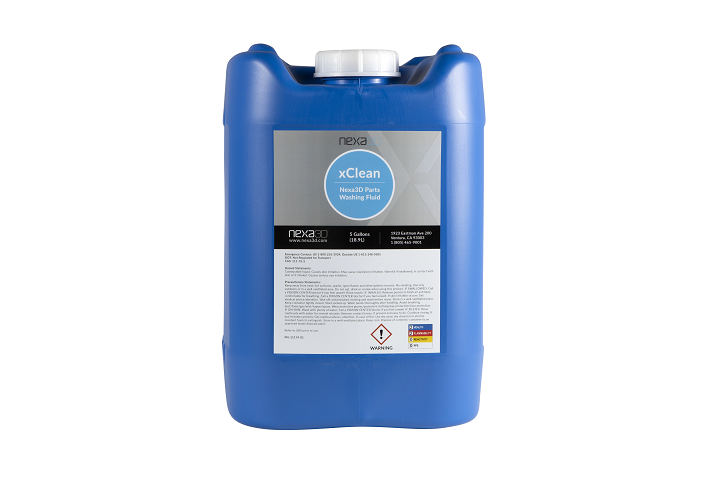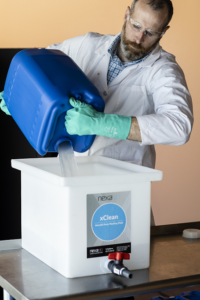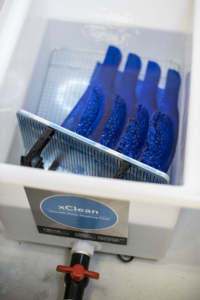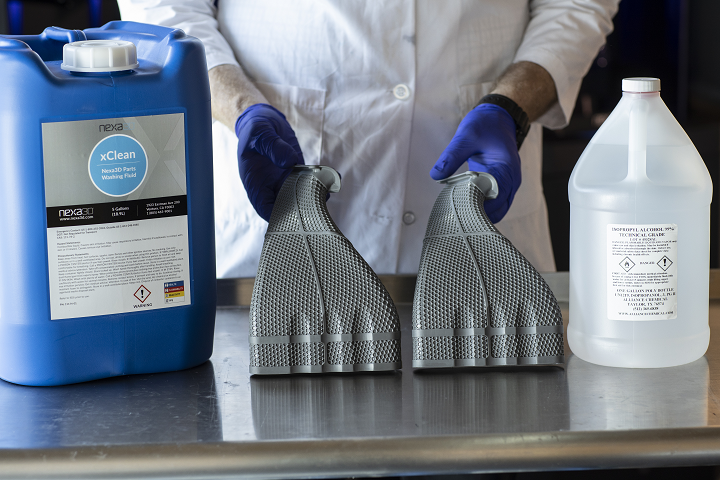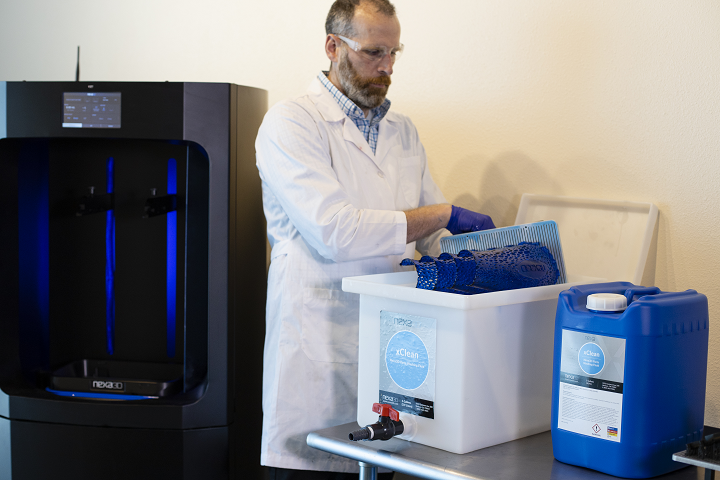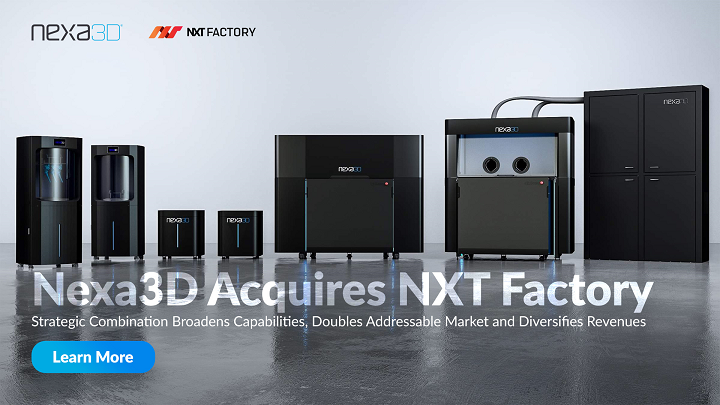Nexa3D Acquires NXT Factory, Introduces Eco-Friendly 3D Printing Washing Solvent
While Nexa3D may specialize in manufacturing super-fast stereolithography 3D printers, the company has been branching out recently, and narrowing its focus on the materials side of things. It launched the high-performance polymer xCE-Black in May, followed soon after with the announcement of a partnership with Henkel to commercialize xMED412, a high-impact material for printing biocompatible medical and wearable devices. Now, Nexa3D has announced that xCLEAN, its new eco-friendly washing solvent for resin and photopolymer 3D printers, is commercially available.
“I am very proud of our entire team for stepping-up during this unprecedented pandemic, and quickly pivoting internal developments and external collaborations to adeptly support our growing customer base and communities. “Throughout this challenging period, we’ve continued to expand the range of our high impact, durable photoplastics, and we are rolling out new productivity tools for the additive manufacturing industry,” said Nexa3D’s CEO and Co-Founder Avi Reichental. “Together with our growing partner network, we are committed to helping our customers improve their design agility, and supply chain resiliency by reducing the time required to produce functional prototypes and production parts from hours to just minutes.”
xCLEAN, compatible with most photopolymeric resin printers, including close loop systems, automated cleaners, and washing units currently on the market, and is safer to handle than other popular cleaning solvents, though it’s not been cleared to use in the cleaning of parts 3D printed out of biocompatible resins.
This material is easy to recycle, as well as recover with the help of a vacuum-assist distillation unit, and doesn’t need any of the typical adherence to shipping regulations or special storage that most post-processing photopolymeric parts require.
“xCLEAN’s development is a powerful reminder that necessity is the mother of invention. We were forced to explore alternatives to isopropyl alcohol (IPA) during the initial Covid-19 surge as IPA became extremely scarce and costs skyrocketed,” explained Nexa3D’s Head of Customer Success Brent Zollinger. ” After considering dozens of candidates, we zeroed in on xCLEAN and quickly embraced it as our go-to cleaning solvent. Having processed thousands of serial production parts in our flexible factory with superior results, we decided to share this incredible cleaner with our customers and invite the entire photopolymer 3D printing community to give it a try.”
Made from molecules that are smaller than DPM and TPM, xCLEAN is extremely effective, and doesn’t have any of the gross, greasy residue that you get with these two alternative materials; just rinse it off with water. It’s also sustainable, with three times the saturation limit of IPA, which means that it lasts three times as long and requires fewer changeovers and generates less waste.
xCLEAN can be ordered for immediate delivery here, or from one of Nexa3D’s authorized resellers. A single 5-gallon container will cost you about $320. To see the material in action, check out the video below:
But materials haven’t been the company’s only focus during COVID-19—the company just announced that it has acquired NXT Factory, which manufactures ultra-fast selective laser sintering (SLS) production systems powered by its proprietary Quantum Laser Sintering (QLS) technology.
“We are thrilled to join forces with Nexa3D and together unleash the power and potential of our products. COVID-19 propelled both of our companies to demonstrate the unique capabilities of our complementary additive manufacturing power as we quickly ramped into full production of personal protective equipment for frontline healthcare workers. This crisis has helped showcase the incredibly rapid and flexible nature of our combined additive manufacturing capabilities compared to traditional manufacturing and demonstrates how vulnerable the global manufacturing supply chain is to unexpected disruptions,” stated Kuba Graczyk, the Co-Founder and CEO of NXT Factory. “Together, we are committed to taking additive manufacturing to the next level and realizing its full potential.”
The two companies have entered into an agreement that states Nexa3D will acquire all the outstanding shares of NXT Factory, and the stockholders and boards of directors of both companies have approved the transaction, the details of which were not disclosed publicly.
By combining NXT Factory and Nexa3D’s high-speed technologies, the company is strengthening its capabilities and portfolio of production-grade materials. Nexa3D will now have access to NXT Factory’s range of powder fusion, supply chain-approved plastics, which will essentially double its addressable market and strongly position it for increased growth in the industry.
Leveraging its relationships with other key material suppliers, Nexa3D will be able to diversify its revenue streams by offering access to 100% of currently available polymer applications
“Stereolithography (SLA) and Selective Laser Sintering (SLS) are the cornerstones of additive manufacturing of plastics, so I am honored and proud to be part of the team that is uniting the two companies that are taking both technologies to their full potential. Having worked side by side with the Nexa3D team over the past four years in Ventura, California, sharing facilities, exhibiting jointly at tradeshows, witnessing untold technological breakthroughs and rapid expansion, there is no doubt in my mind that this is the perfect match for both of our companies. I am excited to join this dream team and contribute towards the creation of a leading fourth generation additive manufacturing powerhouse,” said Tomasz Cieszynski, Co-Founder and CTO of NXT Factory.
Subject to customary and other deal-specific closing conditions being met, the transaction should be completed as soon as practically possible.
(Source/Images: Nexa3D)
The post Nexa3D Acquires NXT Factory, Introduces Eco-Friendly 3D Printing Washing Solvent appeared first on 3DPrint.com | The Voice of 3D Printing / Additive Manufacturing.
The hype and rise of 3D printing and Avi Reichental
What happened in 3D printing at RAPID & TCT 2019?
RAPID 2019: Opening Day and Opening Ceremony
The first day of the RAPID + TCT conference was bristling with activity. The first day mostly consists of lectures and workshops. At some other conferences, this is a secondary affair but here in Detroit we’re really seeing this to be the meat and bones of the conference on day one. There were a tonne of conference events and workshops today from the very general to the highly specific. There were workshops on casting materials for automobiles, implementing quality systems for medical devices, metal printing, and how to use 3D printers in hospitals and biomaterials. A lot of these were almost all day events with multiple speakers that were almost conferences in and of themselves.
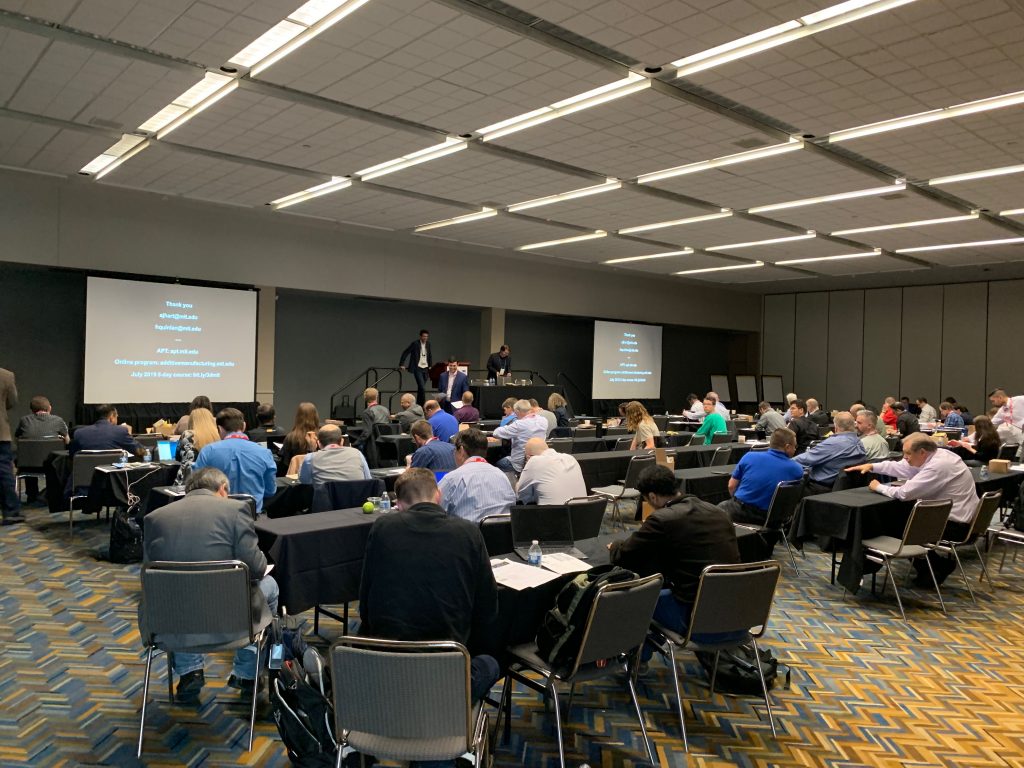
Professor Hart’s Workshop
Professor John Hart gave a great presentation on applying materials and processes to making 3D printed parts throughout the life cycle. This workshop was great for people trying to start business cases internally with 3D Printing. It covered things such as costing and the relationship with the design to the final part. Walking around through all the workshop rooms I was really spoilt for choice. I really do believe that the “workshop day” at Rapid is underappreciated and under-visited. There are people here and there is knowledge here that you really can not find anywhere else. Do not miss this first day if you want to come next year! Having said that there were thousands of attendees for the different workshops and the first day already felt like a big conference.
Things started to get much bigger when we went to the Ballroom for the main opening ceremony.

Erika Berg of Carbon and Vitorrio Bologna of Riddell
Erika Berg of Carbon and Vitorrio Bologna of Riddell keynoted on how their companies were working together to try to make individualized mass customized helmet liners for football helmets. Individual helmets and other sports gear could become a huge application for 3D printing. Using one build of a Carbon L1 3D printer all of the distinct parts of a helmet liner can be produced. The data comes from a scan of a players head which is now done by 3D scanners but Riddell wants to go to a home scan solution for that in the future. The data gets sent to Carbon which then calculates the optimal design of the helmet cellular structure which may have 140,000 struts. Riddell already has 4000 3D scans to work with as well as thousands of readouts of player crashes to tell them how to design the helmets. In the future, the team wants to put accelerometers and other sensors in all helmets to acquire more data that would let them produce better helmets. They want to implement this for all football players from the Pro’s and college to the youth level. All in all the approach with cellular structures and data gathering seems very sound and this is a huge application for 3D printing if it goes forward. I just have questions with the Carbon business model. If Riddell leases the printers if Carbon slices the files if Carbon determines the optimal structure of the helmet then what is Riddell?
If we look at firms such as Nike: Nike is the brand, they design the shoes and know how to market and brand them. Others manufacture. Now Riddell is outsourcing key ownership of the core design competency that they and firms like Nike have. Won’t they be tied to Carbon forever? Isn’t the core part of their helmets the connection between the “crash test data”, head scans and how to create the cellular structures for the helmets?
Carl Dekker of Met-L-Flo then came on. He is the current ASTM 42 Chairman and Advises SME. He presented awards on the best research paper and project. Fast Robotic Soft Matter 3D Printing for Neurosurgical Phantoms Fabrication by Michael Chang was the winner of the Dick Aubin Distinguished Paper Award. On the 23rd you can see him present it. On the research project side the winner was The Copper Cooler: Heat Sink for CPU’s by Lisa Brock and Gitanjali Shanbhag.
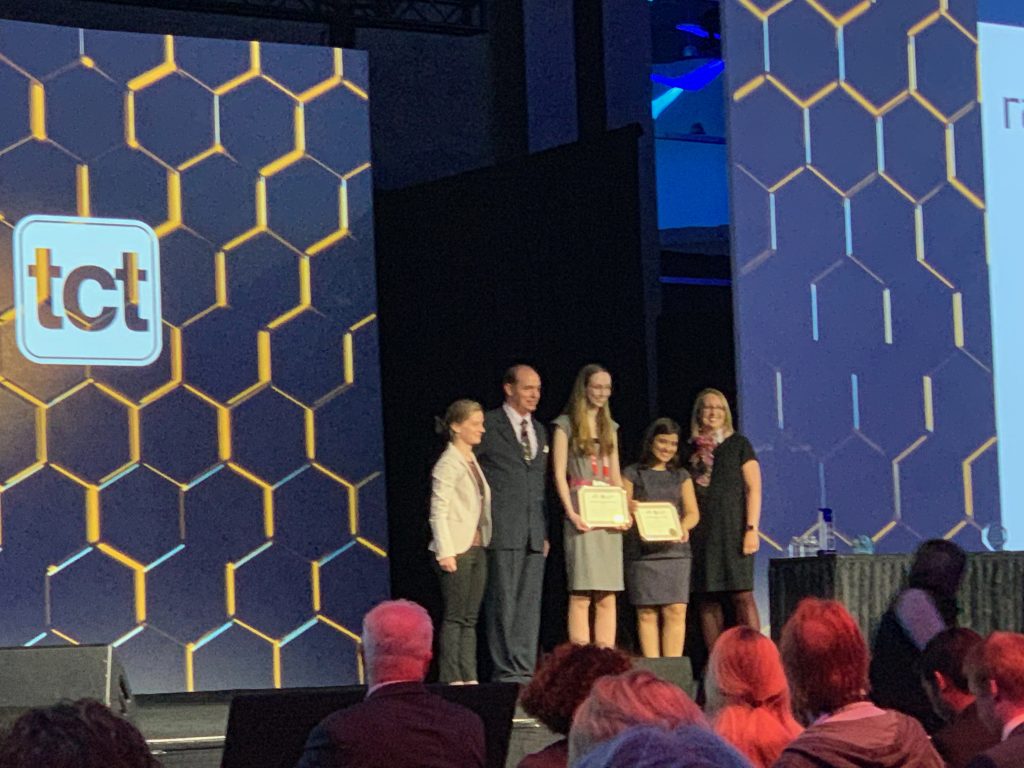
Industry consultant Todd Grimm then took us through the companies that had applied for the innovation award and revealed that 48 out of 400 exhibitors would be on a list to be considered. He then went on to detail all of the firms and their particular innovation in order to tell everyone “What’s New” at Rapid. I thought that this was a particularly helpful presentation for visitors. He also mentioned that the finalists for the innovation award would be: Digital Alloys, e3D, Fabrisonic, Formalloy, NXT Factory, Rapidia, Sigma Labs and Sintratec. I for one really can’t choose there are a number of very deserving firms there and also some very sympathetic teams. Usually one could guess but this time its wide open as far as I’m concerned.
Then the SME Industry Achievement Award was revealed. The winner was Ely Sachs. Ely was a Desktop Metal co-founded but also a core inventor of the “MIT patent” inkjet head based 3D printing technologies years earlier and a more than deserved winner! This was a very exciting almost my brain runneth over first day here in Detroit and I can’t wait to discover more.

